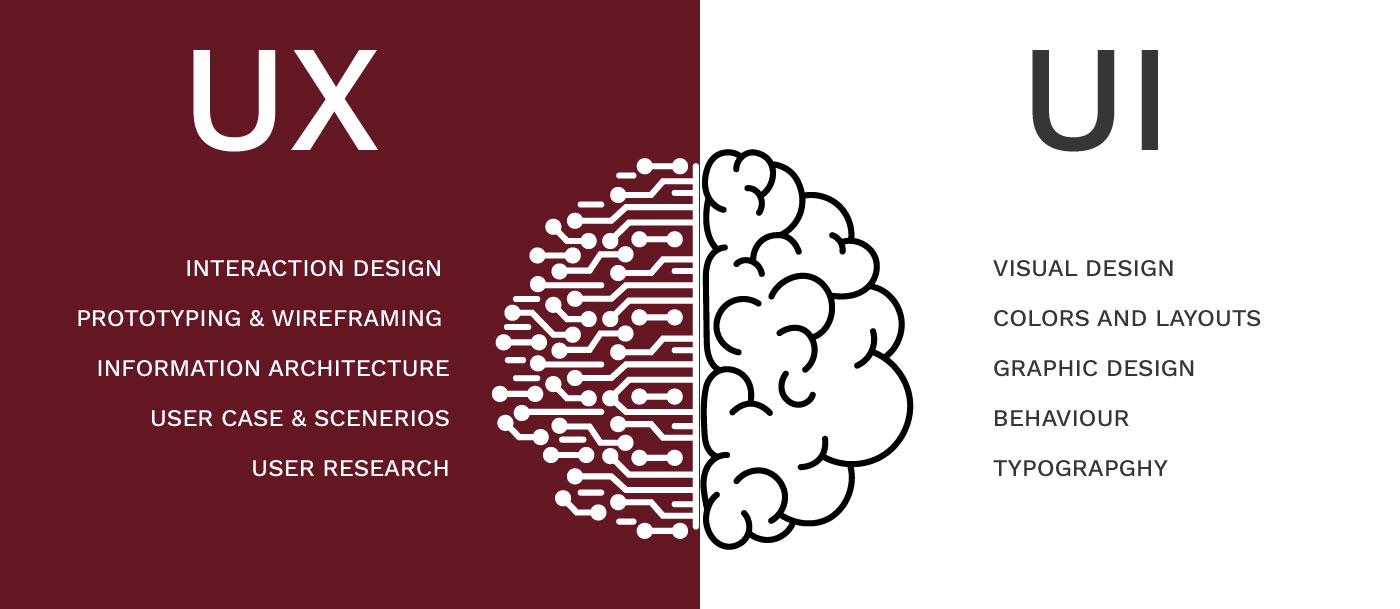
User Experience (UX) refers to the overall experience a person has when interacting with a product, system, or service, particularly in terms of how easy or pleasing it is to use. This includes emotions, perceptions, responses, and behaviors before, during, and after their interaction.
UX in healthcare is picking up steam, as organizations are starting to realize just how big of a difference it can make to patient outcomes. In healthcare, the goal of good UX design is about making tech easier and more intuitive to use. Patients able to easily access medical information on your site are more likely to seek timely care, and providers and administrators able to easily access information on your intranet are more efficient.
By ramping up communication, making complex processes easier, and taking full advantage of cutting-edge tech like artificial intelligence (AI) and chatbots, healthcare organizations can deliver solutions that really hit the mark, leading to happier and more satisfied users.
UI/UX in a healthcare website focuses on creating an interface that is easy to navigate, intuitive, and user-friendly for various stakeholders, such as patients, healthcare providers, and administrators.

Think of the User Interface (UI) as the look and feel of a website. It’s all about the layout, colors, fonts, buttons, images – basically, anything you can see. A good UI design should be a feast for the eyes, with clear, easy-to-read info and a consistent style that just works.
User Experience (UX), on the other hand, is all about interaction. It’s how the information flows, how easy the website is to navigate, how simple tasks are (like making an appointment or looking at medical records), and whether users walk away feeling satisfied.
In healthcare, having a top-notch UI/UX is absolutely key. It allows patients to quickly find doctors or services, book appointments without a hitch, securely access their health records, and get answers fast. For healthcare providers and admins, it means streamlined patient management, hassle-free data entry, and reporting that’s a breeze.
As described above, good UX is about designing and putting into action digital systems and interfaces that make things easier to use, more efficient, and satisfying for users. On that note, when it comes to healthcare, users should feel comfortable, engaged, and guided when interacting with your site.
After all, a healthcare website doesn’t have the same goal as a social media site— we’re not trying to endlessly engage users, we want to make it easy for them to get information, make decisions, and take action. Healthcare website users are largely patients and providers that need to interact with each other quickly, simply, and efficiently— while being mindful of the patient’s needs throughout. This is why prioritizing the user experience is absolutely essential for healthcare organizations.
To illustrate this, here’s what a top-notch healthcare UX can do:
Elevate the Patient Experience
UX is a key player when it comes to how patients engage with healthcare systems online, whether it’s a hospital’s website, appointment scheduling platforms, electronic health records (EHRs), or telemedicine services. By making things easy to use and access, we can really boost patient satisfaction and engagement.
Ideally, patients should be able to:
When the system is easier to use, healthcare providers can focus more on taking care of patients and less on wrestling with clunky digital platforms. Good UX can streamline several processes for providers through their organization intranet, including:
Administrators often juggle a ton of daily operations, which can get overwhelming. A healthcare intranet defined with good UX can help cut down on backlogs and keep things running smoothly.
For administrators, streamlined intranet UX can help:
In a nutshell, UX in healthcare is all about making things simpler, boosting user satisfaction, and ramping up efficiency. All this leads to better health outcomes and improved patient care. The end goal? A smooth, positive interaction between users and the healthcare system for increased conversions. In this way, it’s the healthcare organization that ultimately benefits most.
While there are many benefits to designing user-focused sites, creating a strategy that meets both user expectations as well as organizational goals and objectives isn’t an easy task. Every organization is unique. That’s why it’s imperative that you understand your needs and limitations as you build your UX strategy.
Here are just a few items for you to consider:
Each healthcare provider, patient, and administrator has unique needs and ways of interacting with digital systems. A UX that doesn’t adapt to these varied needs might not deliver the expected results.
For example, elderly patients on your website might need larger fonts and simpler navigation, while younger users might prefer a more feature-rich interface. The key is to create a UX design that can adapt to serve diverse user groups.
In a bid to make a UX strategy all-encompassing, sometimes the design becomes overcomplicated, leading to confusion rather than simplification. Let’s take appointment booking, for instance. A system that requires users to navigate through multiple pages or fill out extensive forms to book an appointment might make your administrators happy, but might deter users from using the service. A good UX design should always aim to make tasks simpler and more intuitive.
Failing to incorporate user feedback into the design and implementation stages can be a significant pitfall. Users provide firsthand insights into usability, so neglecting their input can result in a UX that doesn’t truly serve their needs. Continuous user feedback should be an integral part of UX development, helping designers make necessary tweaks and improvements.
A website or intranet that does not integrate well with existing systems can create headaches for users. For example, if an EHR system doesn’t effectively integrate with a hospital’s existing billing system, it might result in inconsistent data or increased manual work. So, it’s vital to your UX strategy that you choose systems that seamlessly integrate with your current tech infrastructure.
With rapid tech advancements, a healthcare design that isn’t regularly updated can quickly become obsolete. Staying on top of the trends ensures your UX strategy stays on par with technological advancements and evolving user needs. For instance, a design that doesn’t adapt to integrate newer technologies like AI-driven chatbots might lose its effectiveness over time.
Keep in mind, your organization may have entirely different needs than another, or even entirely different goals from previous years! Either way, this information is intended to help you determine which solutions and strategies will work best for your organization.
Now that we’ve gone over all the finer details you’ll need to consider, let’s discuss the next most important topic— how to get started.
Implementing a good UX strategy in healthcare is like piecing together a puzzle; each piece must fit perfectly to create a seamless picture. Here are 10 ways a healthcare organization can craft and implement a user-centric approach:
Start by talking to the actual users – patients, medical staff, administrators. Hold interviews, surveys, or focus groups to understand their needs, preferences, and pain points. This information becomes the foundation of your strategy, ensuring that you build a design that resonates with the people who will use it.
Based on your research, create detailed user personas representing different user types. Think of them as fictional characters that embody real-world users’ characteristics. They’ll guide design decisions by keeping you focused on the people behind the screens.
Sketch out the various paths that users might take through the system. It’s like mapping a hiking trail, showing the twists and turns that lead to the final destination. This visualization helps in designing intuitive and logical flows that guide users effortlessly.
In healthcare, protecting patient privacy is not just ethical; it’s the law. Ensuring that your UX design complies with the Health Insurance Portability and Accountability Act (HIPAA) means building robust security measures into the user experience. Think of it as constructing a fortress that guards precious treasures— in this case, the sensitive personal and medical information of patients.
Collaborate with legal and security experts to understand the specific regulations, and weave them into every layer of design, from data collection forms to information display. Regular audits and ongoing education for the team can further bolster compliance. It’s not just about avoiding legal hassles; it’s about building trust and confidence that the information shared within the system is treated with the utmost care and respect.
Design for everyone, including those with disabilities. Implement standards like high contrast text and easy-to-read fonts. Test with various assistive technologies. Think of it as building ramps along with stairs; it makes sure everyone can get where they need to go.
Use language and visuals that are easy to understand, especially for those without medical backgrounds. Provide explanations for medical terms, use simple language, and break down complex ideas. It’s like translating a scientific paper into a magazine article – more accessible and engaging.
Invite users to test prototypes. Watch how they interact, ask for their feedback, and make necessary adjustments. Think of it as a dress rehearsal before the big show; it helps you iron out the wrinkles and put on a flawless performance.
Build and launch in stages, regularly revisiting and updating based on user feedback. This continuous improvement cycle ensures that the UX stays fresh and aligned with users’ evolving needs. It’s gardening rather than architecture; continual care and cultivation make things flourish.
Offer assistance through various channels like chatbots, email support, or phone lines. It ensures users have help when they need it, no matter their preferred method of communication. It’s like having a friendly neighbor who’s always there when you need a hand.
Implement analytics tools to track user behavior, satisfaction, and other key metrics. Regularly review and interpret this data to make informed decisions. It’s the compass guiding you on the journey, making sure you’re heading in the right direction.
By taking these steps, a healthcare organization can create a UX strategy that feels less like a trip to the DMV and more like a visit to a favorite local cafe. It’s warm, inviting, and centered around the needs of those it serves. A user-centric approach isn’t just good practice; it’s the right thing to do. Because when it comes down to it, healthcare UX isn’t about pixels and code; it’s about people and care.
Whether you’re just after a general resource for healthcare UX or you think your organization’s UX could use an update, Geonetric can help!
As the digital engine behind 500+ websites and intranets, we’re uniquely placed to help your organization walk through the digital front door.
Click Here, to learn how we can take your website from ‘meh’ to marvelous, today!
The original version of this page was published at: https://www.geonetric.com/general/the-importance-of-a-good-ux-strategy-for-healthcare/
At Geonetric, we create compelling digital experiences for healthcare organizations that make lasting patient connections and drive organizational growth. We solve your challenges with expert UX, ... Read more
Whether you’re new to content marketing or you’re ready to take your content marketing efforts to the next level, using a maturity model is a great way to identify where ...read more
Employee communication has never been more important. Learn why your intranet can be the key to better engagement – or the reason your teams are struggling.Your teams – ...read more
The 9th edition of Geonetric’s Healthcare Digital Marketing Trends Survey is an indispensable resource. It will give you an inside view based on data from over 300 organizations ...read more
By Erin Schroeder - Caregivers play an important role in the patient journey. Engage them with meaningful content that helps them make decisions.My mom was one of the millions ...read more